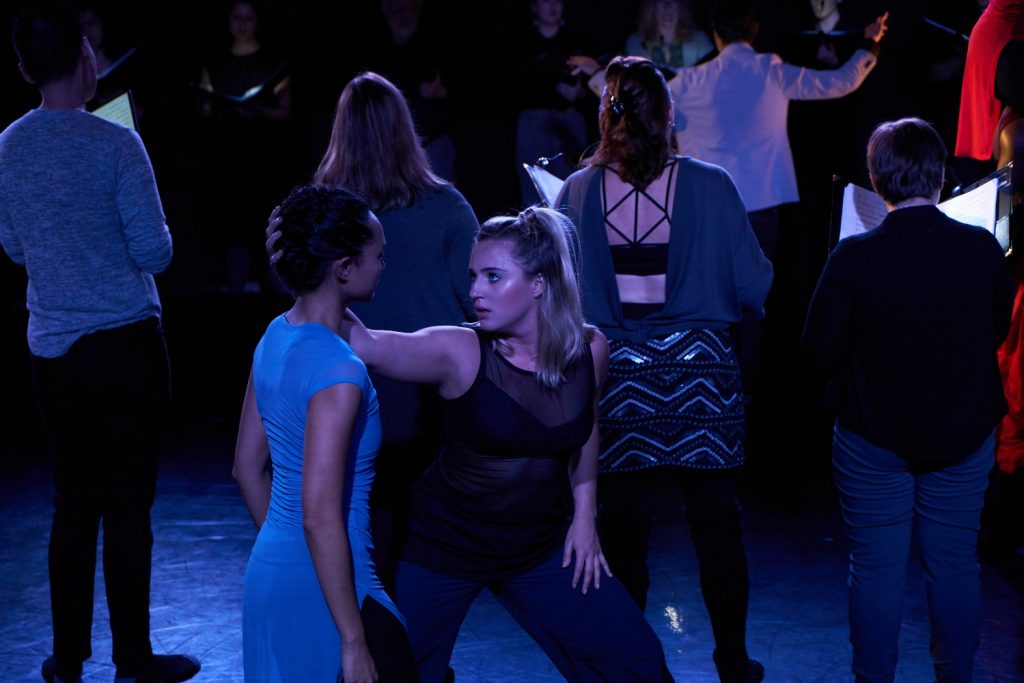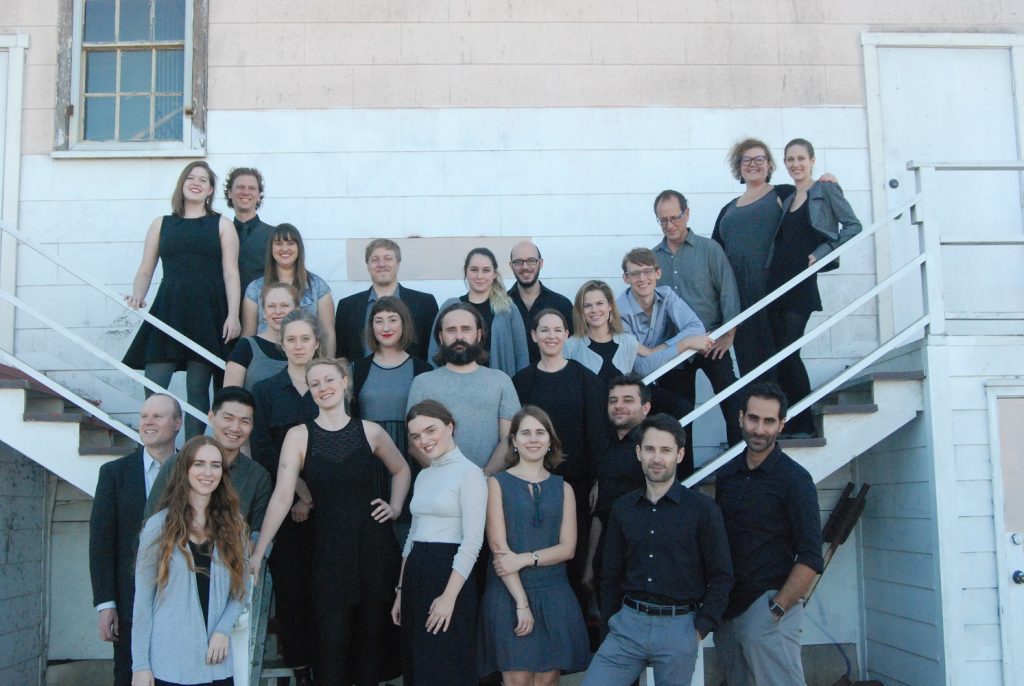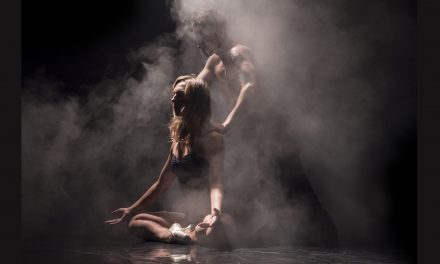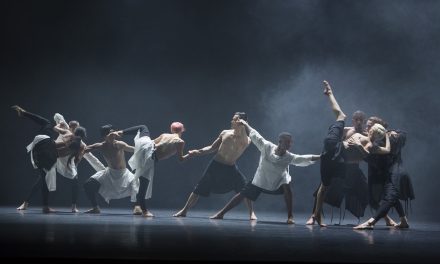In a small studio in Los Angeles, a local dancegoer may not expect a choral collective to accompany a presentation of original dance works. But Iris Company and C3LA have been planning this collaboration, Breath + Body, since Iris artistic director Sophia Stoller met C3LA member Drew Corey two years ago. And while uncommon, this combination is promising – I’m always a sucker for live music and dance, because a shared space can make collaborative magic flourish. The evening of original compositions and choreographic works at Mimoda Studio/Theatre was set up to be intimate and inviting. It may, however, have overshot its mark a bit—while the dancers were committed and the choir inventive, certain staging components fell flat, and the small space revealed unprepared creations.
Set to “Intertwined” by Lucy McKnight and conducted by C3LA’s Evan Roberts, the opening work “Nothing, Except Be There” featured Paige Amicon, Casey Gonzalez, and Madison Shelpuk in choreography by Bryanna Brock. Though it held a few moments of tender beauty at which the women connected, the vast majority of the piece was disjointed. The dancers barely interacted with each other—it seemed as if they were each doing their own improvised solos with little direction. When they did come together, the moments were hit or miss. Even when making physical contact, it appeared that they were separately motivated and unaware of each other. Near the end, they did converge for a brief connection: Gonzalez pushed Amicon and Shelpuk forward in one tender and supportive moment. I hoped for more of this connection throughout, although Shelpuk did stand out with budding articulation on its way to finesse.
In “Echo,” Joan H. Padeo and Jamal Wade entered with strong intentions, introduced by Drew Corey’s composition of the same name (again conducted by Roberts). Choreography by Stoller in collaboration with the dancers, and with dramaturg Cody Brunelle-Potter, suggested a sort of inhuman connection—that of Narcissus and Echo. Padeo drew the audience in with a single captivating look. Her strong intention brought a new focus for the evening. Wade’s grounded control had a quality of rippling flow, and their attention to each other was compelling. Padeo’s costume, however, a flowing pink dress with grey bike shorts underneath, didn’t fit the universe. It distracted from the character, pulling the audience in and out of the mythological world.
“Songbird,” with dancers Bryanna Brock, Joan H. Padeo, Shane Raiford, Madison Shelpuk, Carissa Songhorian, and Jamal Wade, was perhaps the most organized piece of the evening. But the cast’s costumes (mesh dresses, baggy sweatpants tucked into socks) gave choreographer Padeo away immediately; it seemed that she was trying her hand at the recognizable aesthetic of local choreographer Micaela Taylor, to music conducted and composed by Jaco Wong. “Songbird” had all the stylistic indicators of Taylor’s work: cartoonish expression, segmented expansive movements, and the illusion of resistance. And while the composition was moderately successful as a standalone piece, the intricate movements and theatrical facials seemed contrived of mimicry.
In “Yours/Mine,” Marcus Carline’s score as conducted by Drew Corey illustrated the many sides to every story. But again, Paige Amicon, Hyosun Choi, and Casey Gonzalez each danced as though the others were not onstage—the tone was difficult to read and dancers scattered.
“Your Kingdom,” music by Saunder Choi, accompanied dancers Paige Amicon, Hyosun Choi, Joan H. Padeo, Shane Raiford, and Carissa Songhorian. In the most successful piece of the night, choreographer Songhorian explored religion as it affects the human experience. Costuming choices were the best of the night, a mix of turtlenecks in blues and greys. Though a few awkward transitions between choreographic choices meant the dancers sometimes struggled to link movements and intention, Songhorian’s vision was clear and unified.
Through the evening, the choir joined the space, participating in each piece with blocking that did enhance the collaborative spirit. But it seemed as though the dancers weren’t dancing to the music: I’ll concede that choral music may not be the simplest for set counts but listening lacked in each of the pieces. And even when their faces were actively performing, the expression didn’t translate to the dancers’ eyes (Padeo and Songhorian, exceptions). Costumes mostly pulled from the experience—but for an independent production on a low budget, the effort was valiant and the thesis hopeful. This space opened a place for young artist to present their work and collaborate with composers; perhaps it just needed a bit more time and a touch more intention.
Written by Celine Kiner for LA Dance Chronicle, November 5, 2019.
To visit the Iris Company website, click here.
To visit the C3LA website, click here.
To view the trailer video, click here.
Featured image: C3LA and Iris Company – Breath+Body – Photo by Geovanny Santillan.













